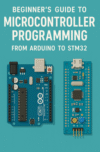Understanding the Need for Real-Time Pitch Adjustment in Offshore Wind Turbines
Offshore wind turbines are increasingly recognized as a vital part of renewable energy infrastructures. However, their efficiency is heavily influenced by their ability to respond to variable wind conditions. One of the critical functionalities that contribute to this efficiency is the pitch control system, which adjusts the angle of the blades to optimize energy capture while protecting the turbine from high winds. Traditional control algorithms often struggle with the rapid dynamics presented by offshore environments, leading to inefficiencies and potential mechanical stress.
FPGA Technology: A Game Changer for Control Algorithms
Field Programmable Gate Arrays (FPGAs) offer a promising solution to the limitations of conventional microcontrollers in this domain. Their parallel processing capabilities allow for the execution of complex control algorithms in real-time, accommodating the swift changes in wind conditions. This is particularly important for pitch adjustment, where latency can lead to suboptimal performance or even damage to the turbine.
Hardware Considerations
When selecting an FPGA for implementing pitch control algorithms, several factors must be considered:
- Processing Power: The chosen FPGA must be capable of processing multiple inputs simultaneously, such as wind speed, direction, and turbine load. High-performance FPGAs from manufacturers like Xilinx or Intel (Altera) are often favored for their robust DSP (Digital Signal Processing) capabilities.
- I/O Capabilities: Real-time data acquisition from sensors is crucial. The FPGA should have ample I/O options to accommodate various sensors, including anemometers and accelerometers.
- Thermal Management: Offshore environments can be harsh. Ensuring the FPGA can operate under varying temperatures and conditions while maintaining reliability is a paramount design consideration.
Firmware Development for Real-Time Control
The firmware must be designed for efficiency. Implementing digital filtering techniques can help reduce noise from sensor data, which is vital for accurate pitch adjustment. However, trade-offs arise here: more complex filtering algorithms can introduce latency. Therefore, a balance must be struck between filter complexity and real-time processing speed.
One common approach is to implement a PID (Proportional, Integral, Derivative) control algorithm directly on the FPGA. The PID controller parameters can be tuned dynamically based on feedback from the turbine’s performance metrics. This adaptability allows for more precise control during varying conditions, but it also necessitates careful attention to stability and responsiveness.
Algorithm Design Trade-offs
Incorporating advanced algorithms such as Model Predictive Control (MPC) can enhance performance by predicting future states of the system based on current data. However, these algorithms require significant computational resources and can introduce complexity in the design. The choice between a simpler PID controller and a more complex MPC often boils down to the specific operational demands of the wind farm and the performance expectations of the stakeholders.
Challenges in Implementation
One of the key challenges in implementing FPGA-based control algorithms is ensuring that the system is robust against faults. Offshore wind turbines are exposed to a variety of environmental stresses, and any failure in the control system could have catastrophic consequences. Therefore, redundancy must be built into both hardware and software. Dual-redundant systems can be implemented where critical components have backups, but this adds weight and complexity to the design.
Another challenge is the integration of the FPGA with existing turbine systems. Many offshore wind turbines have legacy control systems that were not designed with FPGAs in mind. This necessitates careful planning and often custom solutions to ensure seamless communication between the new FPGA-based control system and existing components.
Real-World Design Considerations
When designing an FPGA-based pitch control system, engineers must also take into account the maintenance and accessibility of the hardware. Offshore turbines are challenging to access, so modular designs that allow for easy replacement of components are advantageous. This leads to considerations regarding the physical layout of the FPGA and associated circuitry, ensuring that they are not only efficient but also easy to maintain in the field.
Ultimately, the decision to implement FPGA-based control algorithms for real-time pitch adjustment in offshore wind turbines is a multi-faceted one, involving a careful balance of performance, reliability, and practicality. As the industry continues to evolve, the innovations in control algorithms and hardware will play a pivotal role in harnessing the full potential of wind energy.



